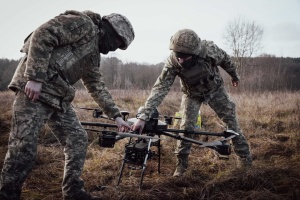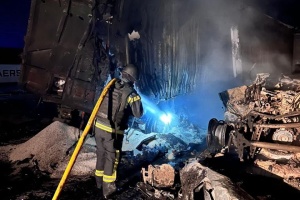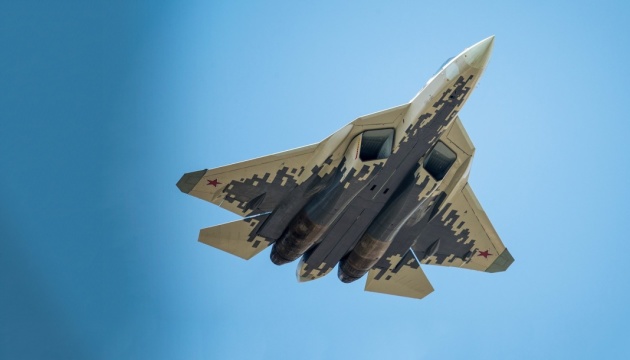
Ukraine has added Russia’s most advanced Sukhoi Su-57 fighter to its “first time hit” collection of targets
June 8 became a gloomy day for the Aerospace Forces of the aggressor country, Russia: on that day Ukrainian forces for the first time had struck one of Russia’s most advanced Su-57 stealth fighter jets on ground at Akhtyubinks air base in Astrakhan region, at 589 kilometers away from the front line. Though the Su-57 is proudly referred to by the Russians as "5th Generation fighter", it actually belongs to Generation 4++, experts say.
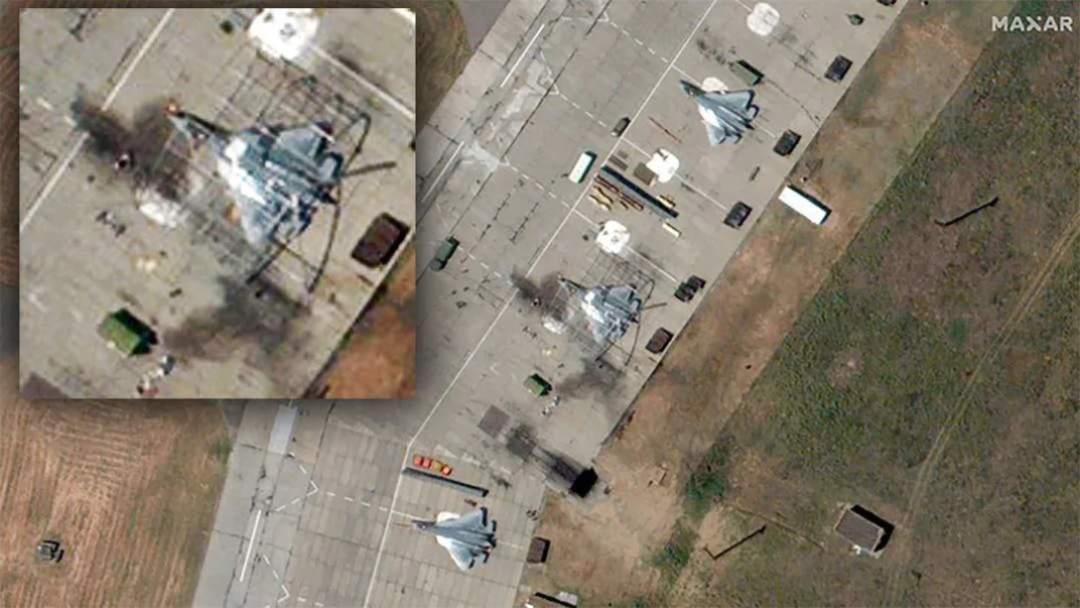
However, what’s even more important in this context is that it was not just the first-time incident of that kind that occurred in more than two years of Russia’s full-scale invasion of Ukraine, but the first such loss in all of the history of warfare. Incidentally, there were quite a few of such "first time hit" targets. For example, the Ukrainian Air Force successfully took out two of Russia’s valuable A-50 long-range radar reconnaissance aircraft. But more about that later.
IS THE SU-57 A "FIFTH GENERATION" FIGHTER OR NOT ENTIRELY?
If one installs a Zhiguli engine into a Tesla, the latter will cease to be a Tesla. The same is with the Russian Su-57 multipurpose stealth fighter (NATO reporting name Falcon).
In the Russian Federation, the Su-57 is categorized as a 5th generation jet, i.e. the most modern type of jet fighters.
The aircraft was developed by the Russian Sukhoi Research and Development Bureau. Initially, India was also involved in the development, but later withdrew from the program (see below why).
The deadlines for delivery of these aircraft to the Russian military were delayed several times. Initial deliveries were set to start in 2015, then postponed to 2016, 2017, 2018... And it was not until 2020 that the first Su-57 was delivered to Russia’s Aerospace Forces and began to be used in the war in Ukraine. The Su-57 saw its first combat use on April 8, 2022, when targets located in Ukraine’s Kirovohrad region and the seaport of Odessa were hit with Kh-59 missiles launched from Su-57 fighters in two separate sorties from Russia. Second was on February 7, 2024, when Russian forces fired three Kh-59 Ovod cruise missiles and as many Kh-69 subsonic cruise missiles at targets in Mykolayiv, Poltava and Sumy regions. Five out of the six missiles launched had been shot down by Ukrainian air defense units. It was with Kh-69 missiles that Russia destroyed the Trypillia Thermal Power Plant on April 11, 2024 along with other infrastructure targets in Ukraine.
But there is one more important aspect, however: these fighters have never flown into Ukrainian airspace, although the enemy advertised that the Su-57s are "able to easily breach out though anti-aircraft barriers and deliver quick and accurate strikes without fear of being shot down."
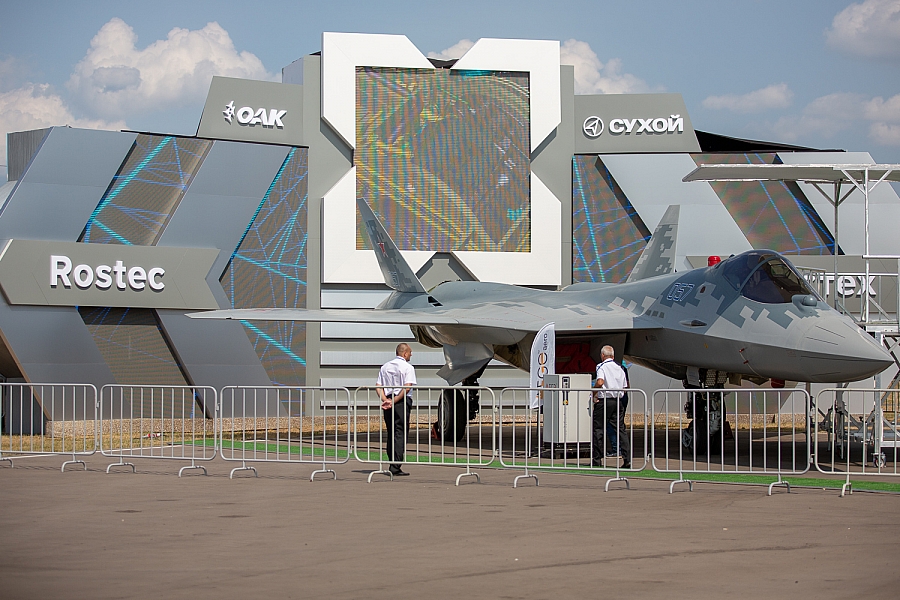
Su-57. Key specifications and performances, as per public and open data sources:
• crew – 1;
• length – 19.7 meters;
• wingspan – 14 meters;
• height – 4.8 meters;
• empty weight – 18.5 tons;
• maximum airspeed at altitude – 2,600 kilometers per hour;
• maximum speed without afterburning – approximately 2,100 kilometers per hour;
• endurance – up to 5.8 hours;
• service ceiling – 20,000 meters.
• armament – built-in 30-mm cannon, air-to-air missiles RVV-MD2 and RVV-SD R-77M; air-to-ground attack munitions: glide bombs KAB-1500 (on external hardpoints only), KAB-500, KAB-250, as well as missiles Kh-35, Kh-38, Kh-58UShK, Kh-59, and Kh-69.
Tesla with a Zhiguli engine or what is wrong with the Su-57
Let's start with the fact that fifth-generation aircraft, to which the Russian Federation attributes the Su-57, are supposed to have several distinct characteristics, including:
• highly effective and efficient engines;
• the capability of cruising at supersonic speeds without afterburning;
• high-speed performance (maximum afterburner-free speed should be not less than Mach 2);
• super high maneuverability;
• very low observability, particularly in the radar and infrared spectrums, achieved thanks to the use of stealth technology (changes in the geometry of the aircraft and engine nozzles; the use of radio-transparent composite materials and radio-absorbing coatings, passive mode operation of onboard sensors for data acquisition and to ensure enhanced stealth).
That said, military analysts point out that the Su-57 does not meet the criteria to qualify for the 5th Gen fighter. Technically, it is of Generation 4++, that is, it is a transitional type of aircraft.
“NOT QUITE FIFTH” GENERATION AIRCRAFT
"The concept of a fifth generation fighter suggests that the fuselage engine should be made highly resistant to electronic countermeasure influences and thermal radiation. The Russians have failed to achieve this. Their Su-57s are still equipped with what they refer to as “first-phase” engines, which are the same engines as used on their 4++ Gen fighters – the Su-35 and Su-34,” comments Valery Romanenko, a reputable aviation expert and a leading researcher at the National Aviation University.
What’s more, the Russians failed to equip the Su-57 with an effective tactical data transmission system.
An American jet fighter, for example, can search out and detect a hostile anti-aircraft system and transmit its location data to friendly artillery forces while itself staying at a stand-off range, which the Russian fighter aircraft cannot do.
"The fifth-generation aircraft must be very deeply integrated into all of the command and control systems, including those of air defense, space and even ground forces. For example, the American JSF (Joint Strike Fighter) F-35 Lightning II, which is being adopted for service by NATO countries, can be linked to any friendly missile or artillery unit without the need to contact additional headquarters, and can be used as spotter for artillery," Mr Romanenko explained.
"If it detects an anti-aircraft system while flying over a location near the front line, the level of integration is so high that it can transmit targeting data immediately to a command post on the ground," the expert noted.
“It marks a specific artillery unit on its tactical information display, contacts it immediately and makes sure the threat is neutralized by friendly fire. The Su-57 doesn’t have that high level of integration into combat management systems. This requires a highly capable data exchange system which the Russians don’t have."
“Not only is the Su-57 less effective actually, but flying it can pose a risk to pilots. The Russian firm that designed, developed, and manufactured what it referred to as "state-of-the-art" Elbrus computing system for this fighter has been sanctioned since 2022, and, in 2023, it refused to supply the technology to the Russian Ministry of Defense. For this reason, the mission computer BCOM IMA BK and radar system Sh-121 on the Su-57 are of low quality and fail regularly.
"The Sh-121 radar system and the BCOM IMA BC mission computer regularly fail. The Sh-121 is responsible for identifying targets and for guiding the missiles, while the BCOM IMA BC computer controls the operation of all onboard systems, including flight management. These regular fails not only make the Su-57 less effective, but also potentially dangerous for pilots," the aviation expert emphasizes.
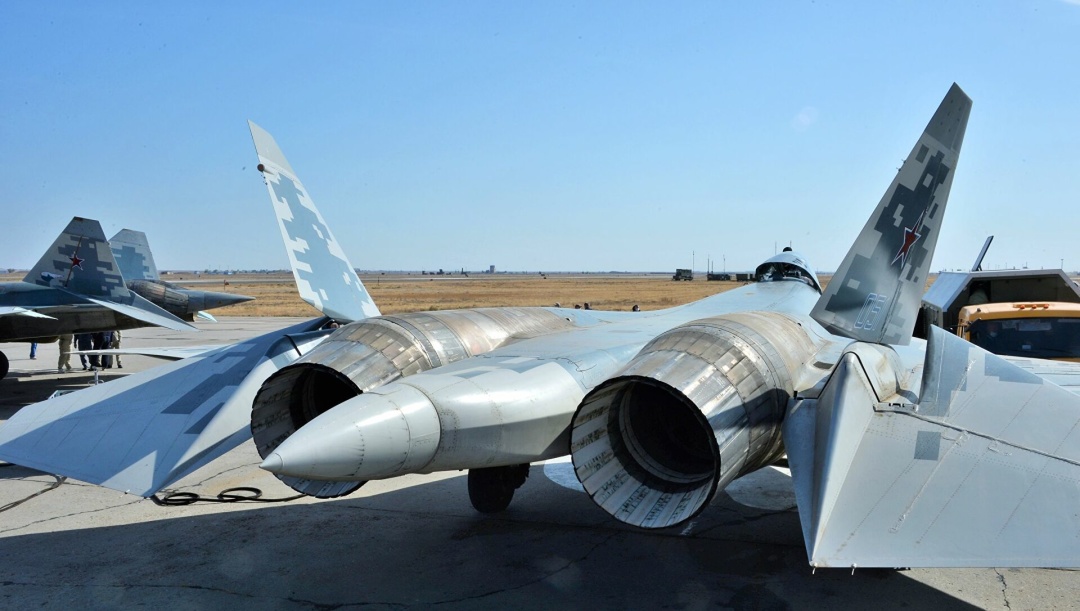
Sergei Auslender, a renowned Israeli military journalist provided his comment on the Su-57: "From the perspective of the budget spent on this project, then, yes, it’s undoubtedly the fifth generation, but it’s definitely not in terms of the technologies used."
Back in 2023, Mr Auslender posted a great YouTube video on the Russian Su-57 fighter, providing evidence of its complete failure.
"There is no such thing as fifth generation aircraft in Russia! (...) It would be unfair to say that the Su-57 does not exist. It does exist, it is flying. But this is more of a concept aircraft. If you look at its stated specifications, the airplane turned out to be really extremely cool and surpassing international counterparts in many aspects. But there is a concept such as expectation vs reality, something like when you order a fashionable and beautiful thing on some Chinese website, and receive a piece of crap instead. Pretty much the same is with the Su-57 jet fighter. What is a 5th generation aircraft, after all? This implies the use of composite materials that greatly reduce the aircraft’s radar profile. Same applies to the avionic component: the 5th generation aircraft must be "smart", able to do lots of things. And the engine. None of these three is there in Russia," Mr Auslender noted further.
And this is a comment provided by Oleksandr Kovalenko, a military analyst with the Information Resistance group: "The Su-57 is a fifth-generation aircraft on paper only. Its characteristics are exaggerated. The Su-57 does not have a highly efficient second-phase engine that would reduce its radar visibility. The Su-57 is actually manufactured mostly from the components and equipment used in the Su-35 fighter aircraft, which itself is a heavily upgraded version of the Su-30. The Su-30, in turn, was developed out of the Su-27 technology. The cockpit and instrument panel on the Su-57 are identical to those seen on the Su-37. It seems that the Russians just took the Su-37 and fitted it up into a pretty bulky fuselage, calling it the "miracle fighter" Su-57."
A SERIOUS BLOW TO RUSSIA’S REPUTATION
The Su-57 project took a budget of approximately 10 billion US dollars, but even though Russia has not yet succeeded in putting Su-57 aircraft into assembly-line production, particularly due to the impact of sanctions. One such fighter aircraft currently comes at a price ranging between USD 35 million and 54 million. And Russia has no more than 12 of them.
"There are few of them in the Russian Federation; this is an extremely limited series, production is quite problematic: on average, about two such aircraft are manufactured every year. It is too expensive," says Oleksandr Kovalenko.
Indeed, much can be talked about why the Su-57 is not a fifth-generation fighter, but in this case the technical, technological and financial aspects are not that important as the reputational aspect.
"It's a shame. The Russians are in the state of panic and hysteria over this defeat," the military observer went on to note.
The very fact that this aircraft was damaged while on Russian soil and no one was able to protect it is highly remarkable. This has caused a bombshell effect comparable to the recent downing of Russia’s A-50 radar surveillance aircraft or Tu-22M3 bombers.
"This is the very instant that a “without-an-analogue" airplane was destroyed. This is an example of how effectively aircraft can be destroyed while on ground. This can be done not only with drones, but, potentially, with ATACMS missiles as well," Mr. Kovalenko believes.
Israel Defense Forces officer and military analyst, Yigal Levin believes that the Su-57 is a very significant target. "Ukraine has been able to destroy this fighter - the beauty and pride of the Russian Aerospace Force - using three relatively inexpensive attack drones."
The expert views: attacks on "golden" targets such as the Su-57 is the most appropriate strategy: "If people are numerous in the Russian Federation, and the Kremlin is not going to save this human resource, then there are serious gaps in the financial and equipment base, and Ukraine must seek to make sure Moscow sinks deeper and deeper still into this gap."
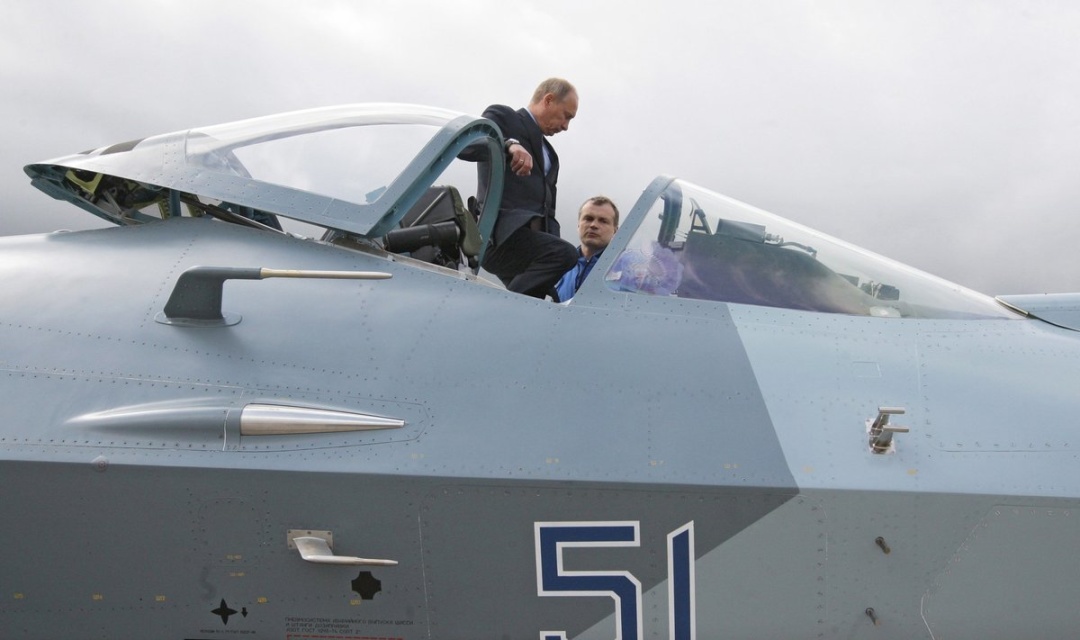
Dmytro Zhmailo, co-founder and executive director of the Ukrainian Center for Security and Cooperation think tank believes that the Su-57 was most likely not just damaged, but damaged beyond repair.
This operation by the Main Intelligence Directorate (HUR) was enabled thanks to a systematic strategy aimed to disable Russian air defenses.
"Now we can strike areas along the Russian border, thus clearing the way for strikes deeper into the Russian Federation. For the Russians, their territory was a strategic advantage previously and they were not particularly worried about protecting their facilities. Now, given that some of our drones can reach distances in excess of 3,000 kilometers, the vast territory is turning into Russia’s very serious disadvantage. The Russians purposed to get our defense lines stretched out, but we are trying to do the same to them. Now they are thinking about which potential targets they should cover, what will come under attack next: an airbase, oil refinery or military base," Mr. Zhmailo said.
NOT ONLY SU-57. UKRAINE HAS AN IMPRESSIVE COLLECTION OF “FIRST TIME HIT” RUSSIAN TARGETS
• Missile cruiser "Moskva”
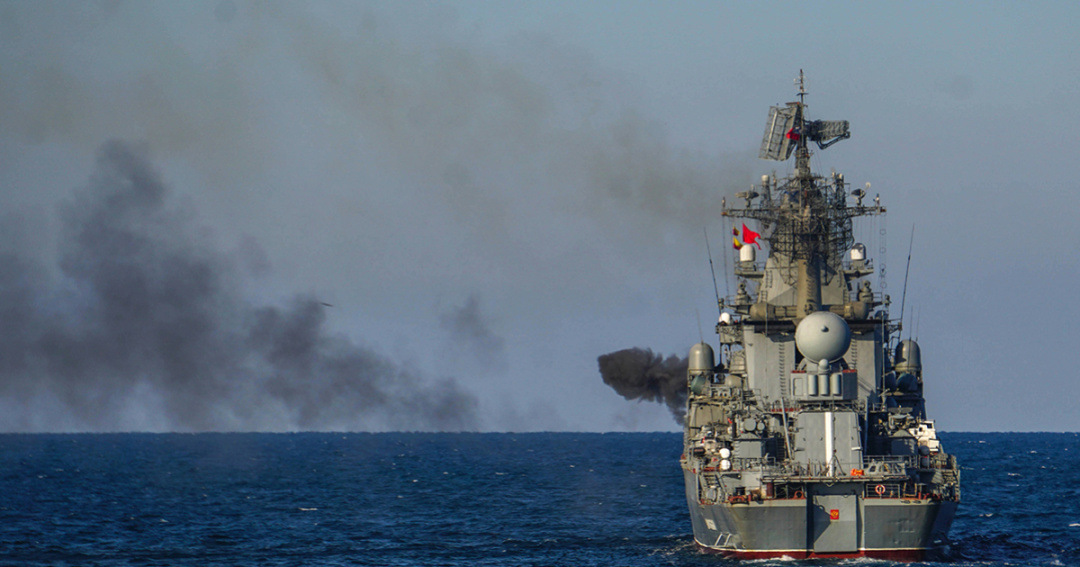
On April 13, 2022, the Russian Black Sea Fleet’s flagship missile cruiser "Moskva” was sunk by two Ukrainian Neptune anti-ship missiles. According to Forbes, this was the most expensive one-time military loss for Russia in all of its war in Ukraine: the lost cruiser was worth approximately USD 750 million. There probably were up to 500 crew and passengers on board. Russia has never revealed the exact number of casualties, other than to say that just 17 people had died, allegedly in aftermath of "munition detonation" and resulting "fire", “with subsequent sinking due to a storm".
The cruiser Moskva is the first warship in this class to have been sunk in a battle environment since May 1982 when the Argentine cruiser General Belgrano was drowned by the British submarine HMS Conqueror during the Falklands War.
For Russia’s Navy, the sinking of the cruiser Moskva was the greatest combat loss since 1941, when the battleship "Marat" was seriously damaged and partially sunk in the aftermath of German bombardment.
Kinzhal. Defeating the “undefeatable”
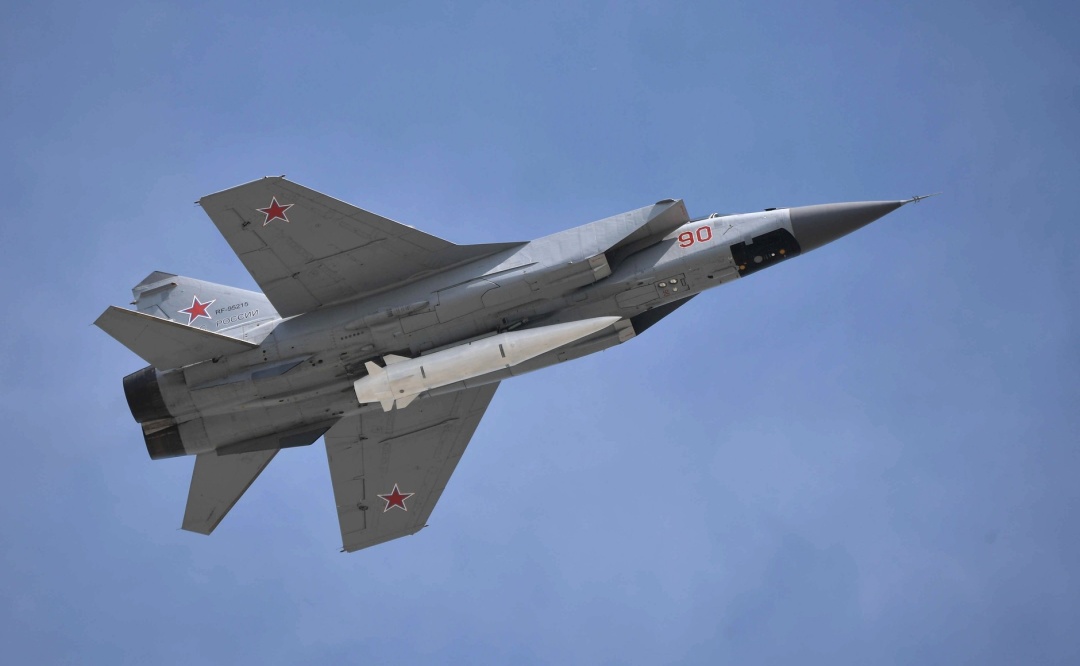
Until May 4, 2023, the Ukrainian military didn’t have the capabilities to counter Russia’s Kh-47M2 "Kinzhal" ballistic missiles, which Putin refers to as "hypersonic". This day had gone down into the history of warfare when the first ever Russian Kinzhal missile was shot down over Kyiv with a U.S. Patriot air defense missile (countering ballistic missiles was previously considered only a hypothetical capability of this air defense system).
"Russian propaganda machine brandished the Kinzhal, traditionally lying that this weapon is “without an analogue”, that it is the world’s first hypersonic missile of a new generation, etc. But on May 4, 2023, another Russian myth was busted. Ukraine’s Air Force units successfully intercepted the much-vaunted Kinzhal missile with a Patriot missile in what was its first ever combat use in Ukraine war. Not only did this showcase the perfection of the American air defense system, but the skill and ability of the Ukrainian air defense crew," Oleksandr Kovalenko has emphasized.
Since then, Ukraine has been able to defeat several dozen Kinzhal missiles (Ukraine’s Air Force had reported 25 Kinzhals destroyed as of early 2024).
• The Downing of two Russian A-50 radar surveillance airplanes
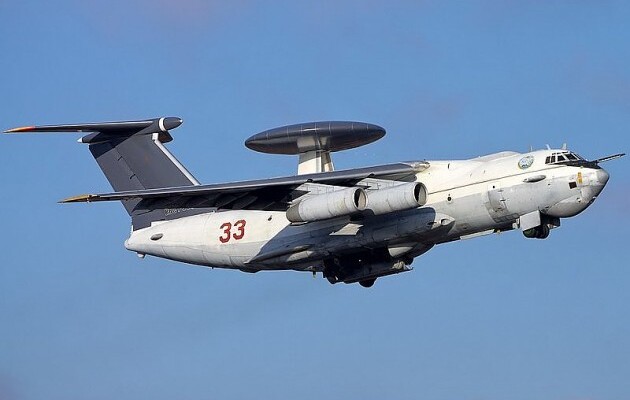
On January 14, 2024, Russia’s rare Beriev A-50 airborne early warning and control (AEW&C) aircraft was shot down and destroyed over the Sea of Azov, for the first time in history. On a parallel track, Ukrainian air defense units took out an Illyushin Il-22 airborne command and control center later on the same day. The latter, albeit it was able to reach and land on an airfield, was damaged “beyond repair”, as reported by the then Air Force’s spokesman, Yuri Ihnat.
The second A-50 was destroyed on February 23.
This aircraft has capabilities to conduct target reconnaissance on land, at sea, and in the air; to spot ballistic missile flares at ranges up to 800 kilometers away, and its radar can locate and track aircraft and cruise missile targets, including Storm Shadow and SCALP missiles, out to 700 kilometers, airborne targets and cruise missiles out to 400 kilometers, and armored vehicle concentrations out to 450 kilometers. Moscow also boasted that the A-50 provides targeting data for S-400 anti-aircraft missiles.
"The A-50 can provide targeting data to fighter aircraft and be used as an airborne command post, conduct airspace reconnaissance, and increase range capabilities of air defense assets. In Soviet times, one A-50 was priced at approximately USD 350 million, but its current worth exceeds USD 500 million. However, it’s not the cost that matters, but the fact that Russia cannot manufacture A-50s, and so the loss of at least one is very painful for Russia, and it is also a serious reputational blow," the Information Resistance" group’s analyst has emphasized.
The list of "the first in the world/in the modern history of warfare" should also include swarm attacks by naval drones. Certainly, naval drones are not what Ukraine invented, but have been used by different armed forces for many years now. But Ukraine was the first in the world to show off how effectively sea drones can be used by a country that doesn’t have a potent naval fleet of its own.
Alongside this, this list should also include the attack and defeat with Ukrainian cruise missiles of a Russian Navy’s submarine docked in the currently Russian occupied city of Sevastopol overnight on September 13, 2023, as well as the downing of a Ka-52 "Alligator" helicopter with a Javelin ATGM on Berdiansk axis on July 3, 2023 (one Alligator, which, the Russian propaganda claims, is the newest and most capable rotor-wing aircraft in Russian armory, is worth USD 16 million).
"Also for the first time, Ukraine eliminated another “without an analogue” Russian weapon asset – the valuable and “unique” S-400 Triumph air defense system, along with other pieces of rare equipment, including the ones that Russia had never used in combat operations previously. The first BTR-90, for example, a rare museum exhibit, was destroyed outside of Avdiivka. The Ukrainian Armed Forces successfully targeted and destroyed, also for the first time, a rare Russian Ladoga heavily armored fighting vehicle known as the “Doomsday Tank,” Oleksandr Kovalenko went on to explain.
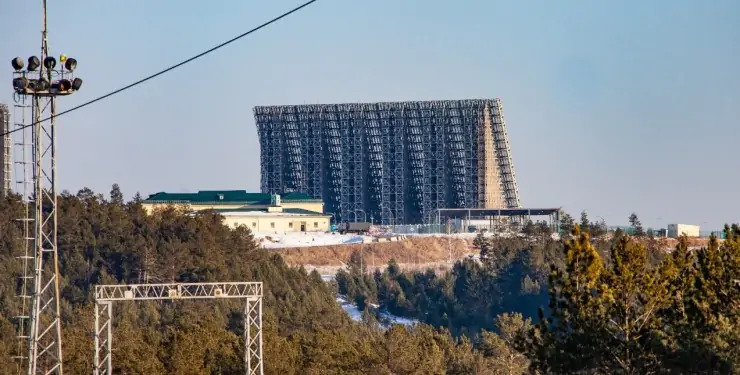
But the most valuable of the “first time hit” Russian targets, according to the expert, are the over-the-horizon radar systems "Voronezh-DM" and "Voronezh-M" that had been taken out in Russia’s Krasnodar Region and Orenburg Region, respectively. These were no ordinary radars. They were part of Russia’s strategic early warning system, designed to detect an incoming American nuclear strike and to enable Russia to launch its own nuclear forces before they are destroyed.
Ukraine struck them with drones for the first time on this May 24, which inflicted yet another reputational blow to the Kremlin.
Not only the "Voronezh" radar system is a means of surveillance, but it also searches out and locates targets for Russia’s most advanced and capable electronic warfare system "Tobol". It is with this EW asset that the Russians can jam GPS signal and mobile communications over Poland and the Baltic Sea countries. This EW asset is capable enough to jam, disrupt, and interfere with Starlink communications in Ukraine, thus frustrating the accuracy of precision attacks with western supplied munitions”.
Myroslav Liskovych. Kyiv

